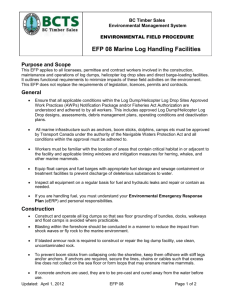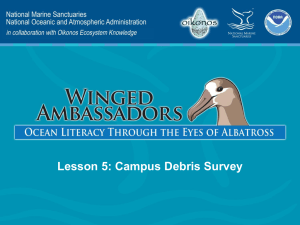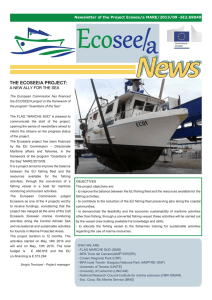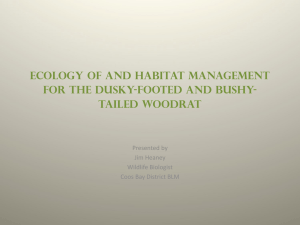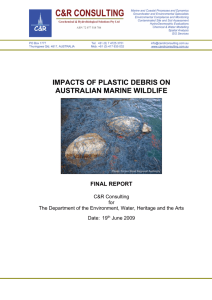How Does Marine Debris Impact Marine Wildlife?
advertisement
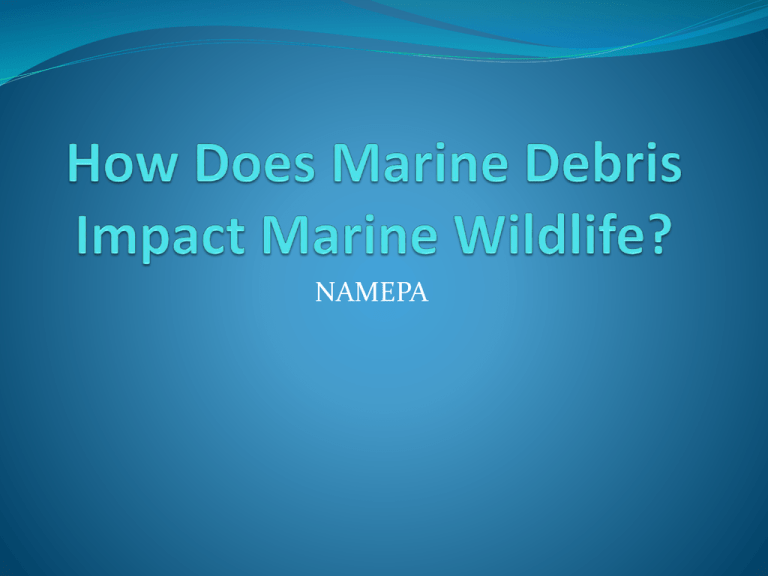
NAMEPA Marine debris can have serious impacts on both marine wildlife and humans. Debris can entangle, maim, and even drown many wildlife species. Animals can also mistake some debris for food; once ingested, these materials can cause starvation and/or choking. Although almost any species can be harmed by marine debris, certain species – including seals, sea lions, seabirds and sea turtles – are more susceptible to its dangers than others. TWO Main Threats to Marine Wildlife The two primary threats that marine debris poses to marine wildlife are entanglement and ingestion. Entanglement Some entanglement occurs when the animal is attracted to the debris as part of its normal behavior or out of curiosity. Entanglement is harmful to wildlife for several reasons: It can cause wounds that can lead to infections or loss of limbs. It may cause strangulation, choking, or suffocation. It can impair an animal’s ability to swim, which may lead to drowning, or make it difficult for the animal to move, find food, and escape from predators. Entangled manatee Ingestion Ingestion occurs when an animal swallows marine debris. Ingestion sometimes happens accidentally, but generally animals ingest debris because it looks like food Ingestion can lead to choking, starvation or malnutrition if the ingested items block the intestinal tract and prevent digestion, or accumulate in the digestive tract and make the animal feel “full” Endangered and Threatened Species Endangered species: A species of animal or plant that is in immediate danger of becoming extinct. Threatened species: A species whose numbers are low or declining. A threatened species is not in immediate danger of extinction, but is likely to become endangered if it is not protected. Marine debris can pose significant threats to threatened and endangered species. Affected Animals Marine mammals, sea turtles, birds, fish, and crustaceans all have been affected by marine debris through entanglement or ingestion. Unfortunately, many of the species most vulnerable to the impacts of marine debris are endangered or threatened. Of the different types of marine mammals, seals and sea lions are the most affected (primarily by incidents of entanglement) because of their natural curiosity and tendency investigate unusual objects in the environment Fishing nets, fishing line, ropes, plastic sheeting and packing straps can be major problems for these animals. Sea Turtles and Debris All six species of sea turtles found in the United States have been found entangled in different types of marine debris, such as fishing line, rope and fishing nets. however, ingestion of debris is an even greater problem for these species, as they are indiscriminate feeders. Sea turtles have swallowed plastic bags because they look like jellyfish, one of their favorite foods. Cases of turtles swallowing balloons, tar balls, and other debris that has become encrusted with algae and other marine forms have also been reported Seabirds and Debris Thousands of seabirds are thought to die from entanglement or ingestion each year. Since many seabirds feed on fish, they are often attracted to fish that have been caught or entangled in nets and fishing line. Unfortunately, when birds prey upon entangled fish, they can become entangled themselves. Entanglement in fishing line has been a particular problem for the brown pelican, which has been listed as an endangered species. Fish, Crustaceans and Debris Fish and crustaceans (such as lobsters and crabs) are frequently caught in lost or discarded fishing nets and fishing line (also referred to as derelict fishing gear). This phenomenon is known as ghost fishing Here are some animals that could be harmed by marine debris Giant Squids Architeuthis dux • Largest invertebrate ever known to exist • Average 3-9 meters long • Largest eyes out of any animal • Eat deep sea fishes and other squid species • Sperm whales and sleeper sharks are two known predators Moon Jellyfishes Aurelia aurita • Range from 5-40cm in diameter • Swim horizontally • Found near the coast in warm and tropical waters • Occur in large numbers • Feed on zooplankton Tiger Shark Galeocerdo cuvier • One of the largest sharks in the world • Gray with tiger-stripe markings • Found worldwide in temperate and tropical seas • Widest variety in their diet out of all shark species • Can be curious and aggressive Saltwater Crocodiles • • • • • Largest living reptiles Jaws contain between 64-68 teeth Intelligent Communicate with barks Found on coasts of northern Australia • Feed on cabs, turtles, snakes, birds, buffalo, wild boar, and monkeys • Females lay between 4o-60 eggs • Harvested for their skin • Populations in some countries are declining Crocodylus porosus Blue-ringed Octopuses Hapalochlaena maculosa • Bright blue rings appear when alarmed • 5-10cm long (size of golf ball) • Deadliest of all cephalopods • Venom is 10,000 times more toxic than syonide • Powerful beak-like mouth • Found in coral reefs and tide pools in Southern Australia • http://www.youtube.com/watch?v=SNxJwCG JtsA Atlantic Bluefin Tuna Thunnus thynnus One of the largest bony fishes Dark blue and black with silver bellies Live in subtropical and temperate waters of the Atlantic Ocean, the Mediterranean, and Black Seas Feed on smaller fish Victim of overfishing Loggerhead Sea Turtles Named after large heads Dive for 4 to 5 minutes Breath holding ability affected by stress Can sleep underwater for hours, but need air every few minutes under activity Found in Atlantic Ocean Feed on jellyfish, mollusks, egg clusters, squids, and flying fishes Live to be over 50 years old Coral Reefs Shelter marine life, used in medicines, create recreation for humans, create sand for beaches, and serve as buffer for shoreline Built by coral polyps (small animals similar to jellyfish) Hard corals, soft corals, sea fans, tropical coral reefs Extremely sensitive to environmental changes Spinner Dolphins Stenella Longirostris Perform playful stunts Different shades of gray Inhabit waters off the west coast of central America Feed at night on small fish and squid Predators include sharks and killer whales Often caught in fishing nets Harp Seals Pagophilus groenlandicus Latin name translates to “ice loving seal of Greenland” Baby seals have yellow coats Live in waters of the Arctic and Northern Atlantic Oceans Diet of fish and crustaceans Predators are polar bears, killer whales, and sharks Hunted for their coats You can make a difference!!

